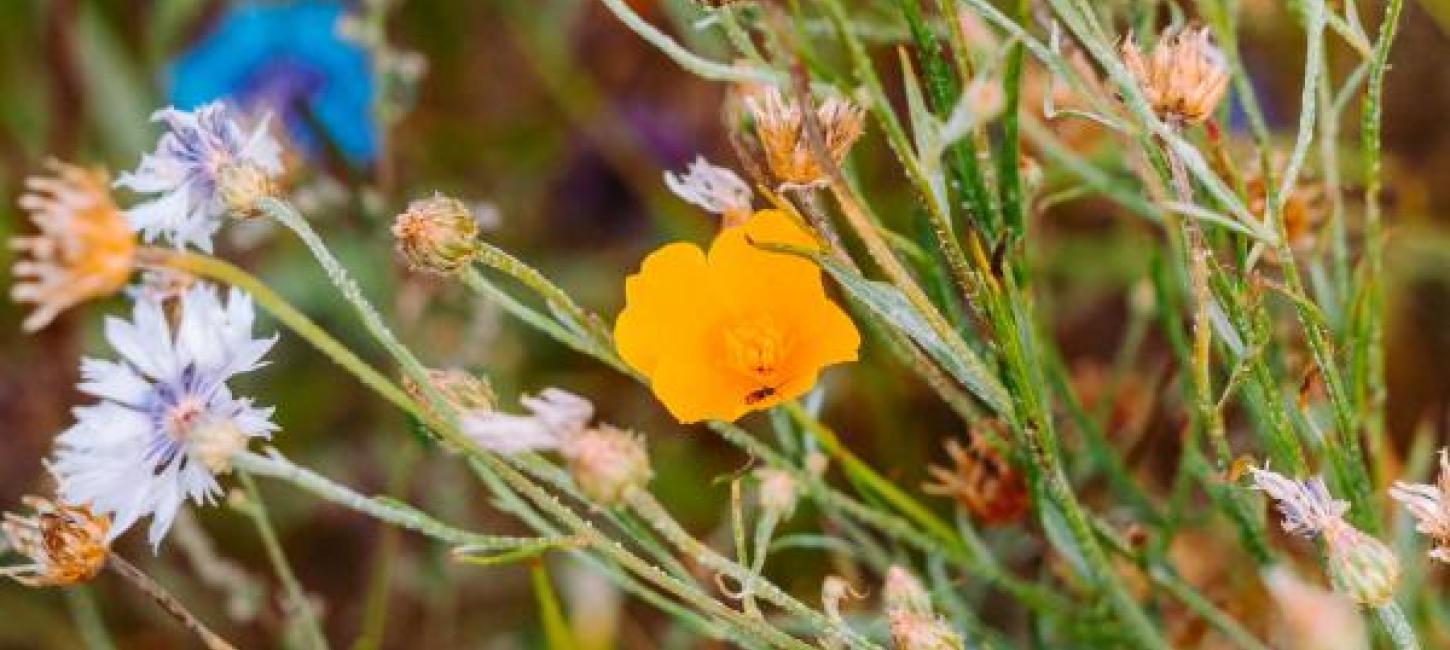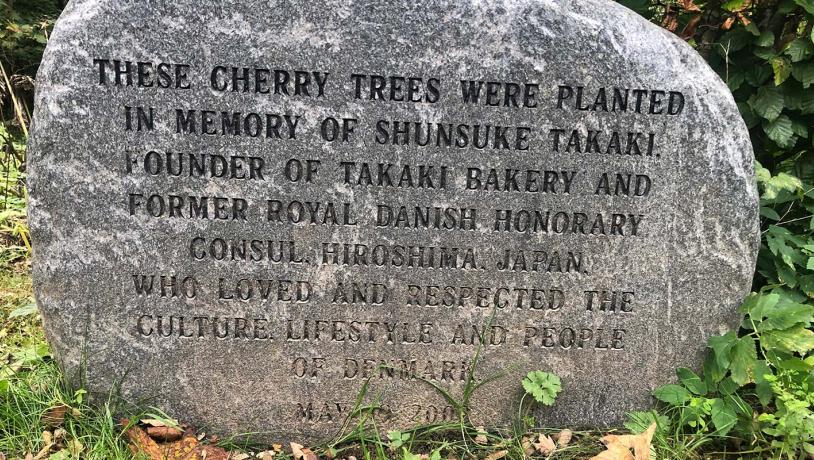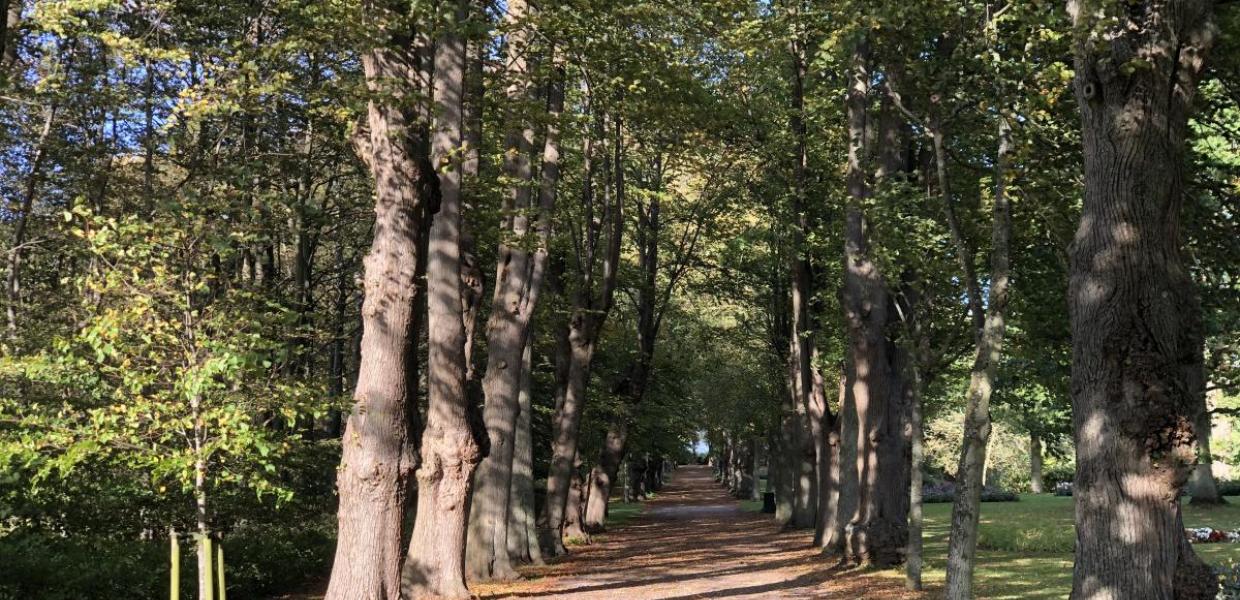Plants in South Zealand & Møn
Nature is wonderful, fascinating and great – and the nature in South Zealand & Møn is absolutely no exception. In fact, it’s so great in these parts, it’s worth a trip in itself!
The beauty is in the detail
A great way to experience the nature of South Zealand & Møn is to take advantage of one of the area’s many hiking trails. The area offers long, flat stretches, tall hills and deep valleys, so there is something for everyone here. You can enjoy the beautiful and varied fauna everywhere you go. You can read more about that below.
Ancient and special trees
Denmark’s longest avenue of Japanese cherry trees doubles as the entrance to the over 600-year-old Gavnø Castle. The incredibly beautiful avenue blooms in the spring and inspires a unique, fairytale-like sense of grandeur and grace. Read the story of how the trees came to Gavnø Castle, told by Baroness Helle Reedtz-Thott:
"Mr. Takaki from Japan came on an exchange trip to Denmark in the late 1950s. He became acquainted with Danish baked traditions and Danish pastries. During his stay he met Henrik Tholstrup, owner of Tholstrup Cheese, who was the grandfather of baron Otto Reedtz -Thott from Gavnø Castle. The Tholstrup family invites Mr. Takaki to Gavnø Castle, which he is visiting for the first time, Mr. Takaki falls in love with Gavnø and thought it was one of the most beautiful places he had seen. business in Japan to a true empire under the name Andersen Bakery, inspired by HC Andersen. Today, the bread empire has up to 6,000 employees, has sales of over DKK 3.5 billion and is among the five largest bread companies in Japan with 25 times as many Mr. Takaki dies in 2001 and on that occasion the family turns to Gavnø Castle and asks if they would allow the construction of a Japanese cherry tree alley and a memorial stone on the road leading to the Benefit island. It would the Baron family with joy. Every year in May, the family comes from Japan and visits the family on Gavnø and sees the raised memorial stone and the beautifully flowering avenue, which today is reputed to be Denmark's longest cherry avenue. "
Photo:VisitSydsjælland-Møn
Pinetum by the Suså river
Not far from the Suså river, you will find Herlufsholm Pinetum. The area was built back in 1890-1920, when more than 100 species of conifers and pine trees from around the world were planted. The area was established to create a place for education in forestry, but also as a testing ground in the search for trees suitable for forestry. Many of the old pines and conifers remain at Herlufsholm, where around 65 species have been preserved. The Suså river, which extends for approx. 87 kilometres, offers a unique opportunity to experience pristine forest areas where, among other things, kingfishers can also be seen.
The beech trees on Møn
The Møns Klint cliffs themselves make up a unique natural area, and the surrounding forests contain even more natural history. The approx. 400-year-old beech trees adorning the forests on the Timmesø Bjerg hill remain green well into the autumn, when you might expect the leaves to have faded into brown, yellow and orange colours. This is due to the beech trees getting their energy from all the limestone found in the cliff. The limestone also means that some of the leaves may appear more yellow than green, even in summer, because the lime prevents the trees from absorbing important nutrients such as iron
The linden tree avenue in Gavnø Castle Park
In 1755, a long avenue of linden trees was planted at the southern end of the castle park, but this was not the first time these trees had been planted, as they came from Kongens Nytorv square in Copenhagen. The beautiful trees were a gift from King Frederik V to Count Otto Thott, as the king felt the trees had become too big for Kongens Nytorv square, overshadowing the view of Christian V’s statue. The huge trees were brought to Gavnø Castle on horse-drawn carts. Furthermore, Gavnø Castle Park houses an artificial hill called Troldehøjen – Troll Hill – where 12 magnificent linden trees line up.
Photo:Gavnø Slot
In Denmark, there are around 45 species of wild orchids, and as many as 18 of these can be found on Møns Klint, making the Møns Klint cliffs one of the places with the most species of this beautiful flower in the country. The plant has a good chance of thriving there due to the high content of lime in the soil. They can be seen primarily in the Klinteskoven forest and by the Høvblege and Jydelejet grasslands. However, it’s important to remember that the beautiful flowers are protected, and you are therefore not permitted to pick or otherwise take the flowers home. Feel free to photograph the little marvels, however. Read more about the orchids of Møns Klint here.
At Knudshoved Odde point, you can see 15 different habitats, including beach ridges, dunes, salt marshes, pastures, lakes and forests. There are both common and uncommon species to be found, and what makes this particularly special is that so many different types can be found in one place. For example, you can see rare species such as adder’s tongue, lesser chickweed, little bur medick, lesser marshwort and squirreltail fescue. Remember that the area is protected, and we urge you to respect nature.




